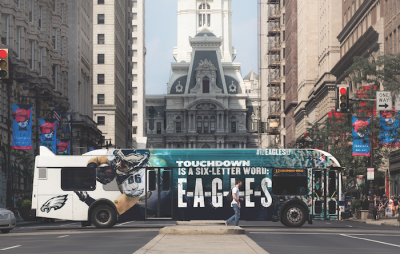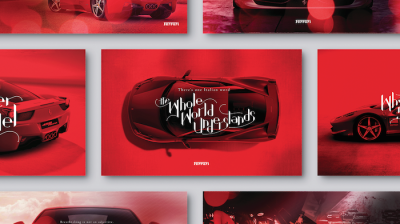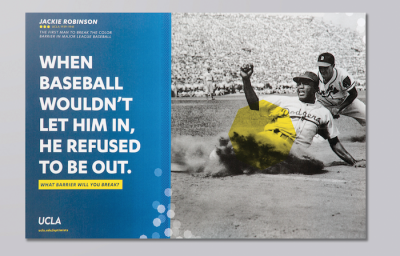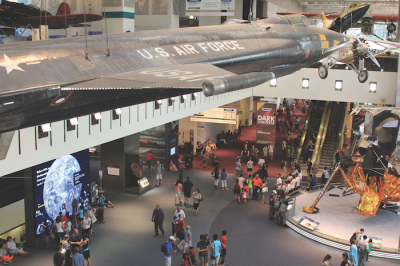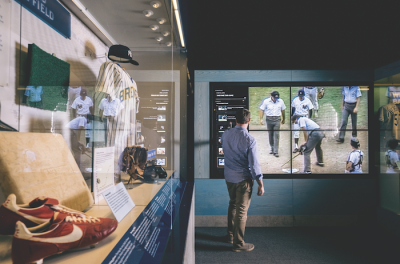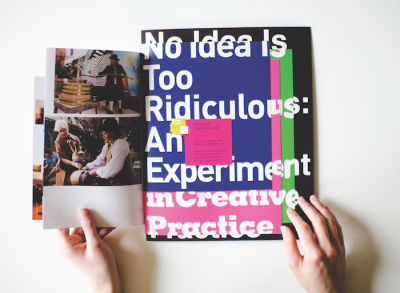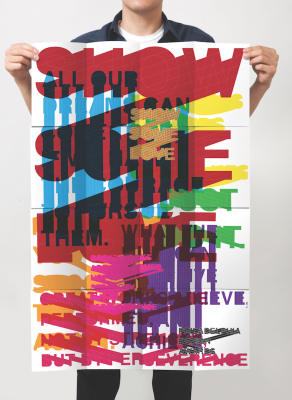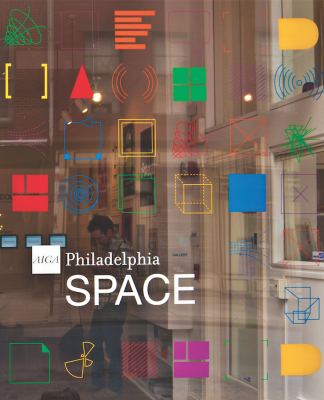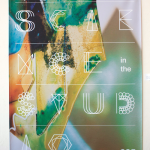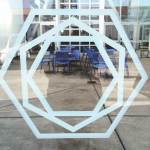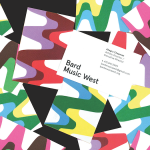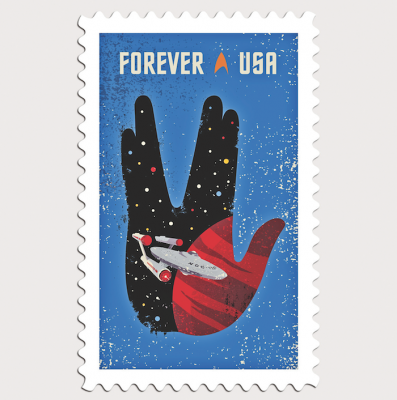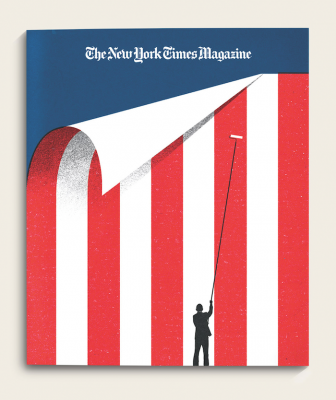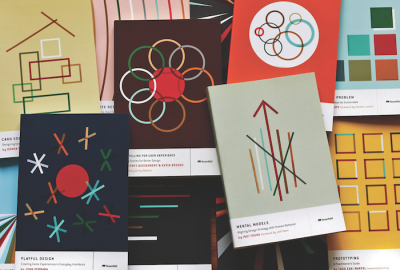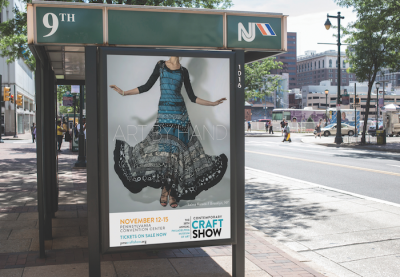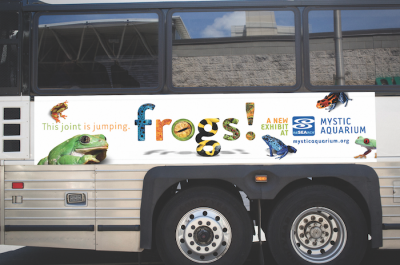Editor’s Note This selection of coloring books for designers was originally featured in the Fall 2016 issue of HOW Magazine. Get the full issue here, or subscribe to get HOW all year long.
Explore Philadelphia design firms, hot spots and the creative community that loves its city’s accessibility, affordability, dining, culture, green spaces—and the clients who keep them busy doing great work.
by Ellen Shapiro
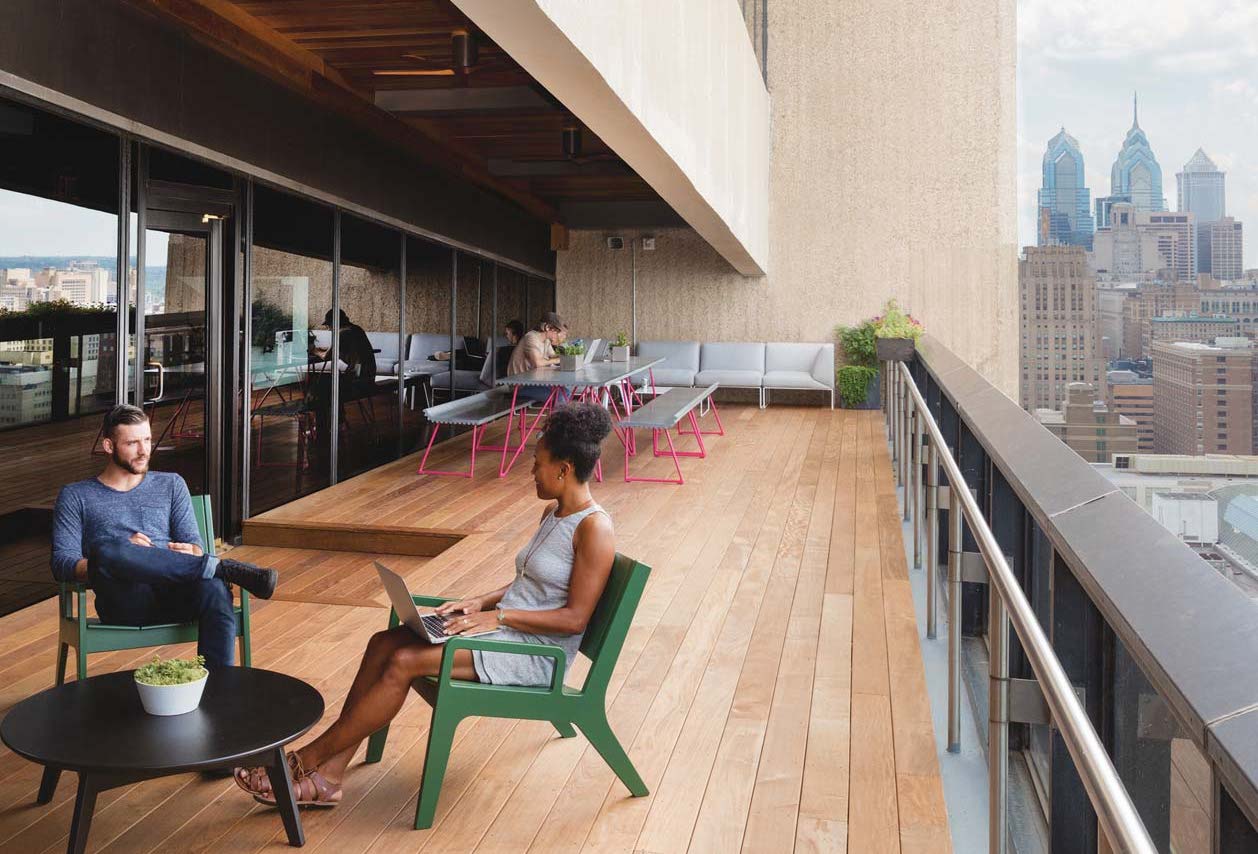
View from the terrace at Philadelphia branding agency 160over90
It all started in 1681, when King Charles II of England granted William Penn 45,000 acres of New World land on which to establish a colony. The land grant, payment of a debt the king owed to Penn’s late father, was a clever way to rid England of its Quakers, led by Penn, who’d been jailed for criticizing the Anglican Church and promoting Quaker teachings on social reform. Envisioning a place where people of different faiths could live harmoniously, Penn planned the new
colony’s government, distributed land to settlers and established friendly relations with the Native Americans who lived there. He founded its capital city on the banks of the Delaware, naming it Philadelphia, from the Greek phileo (“love”) and adelphos (“brother”). There, the 13 Colonies declared independence from England in 1776, and the U.S. Constitution was drafted and signed.
Two hundred–plus years later, the city has built itself into a shining metropolis. One of its hallmarks
is its thriving, congenial design community. Penn would be proud. It’s a community bolstered by civic
resources like the Philadelphia Office of Arts, Culture and the Creative Economy, which oversees arts programs and hosts Creative Philadelphia, an online hub where product and interior designers, architects, urban planners and multimedia and graphic designers can connect and learn.
“Philadelphia is the fifth-largest city in the country, but it doesn’t feel like that,” says Maribeth Kradel-Weitzel, associate professor at Philadelphia University and principal of Kradel Design. “You could attend a festival, concert or lecture every night—and you can also own a home, raise a family, even have a yard. Designer friends tell me that these things aren’t always attainable in other cities.”
HISTORY, ACCESSIBILITY, AFFORDABILITY, CULTURE
Everywhere you go, you see icons of American history. Stars and stripes wave from beautifully preserved brick row houses with creamy white trim. The sleek new offices of 160over90—the largest branding agency in town—afford sweeping views of the city skyline. Right across the street is Independence National Historical Park, site of the Liberty Bell and Independence Hall.
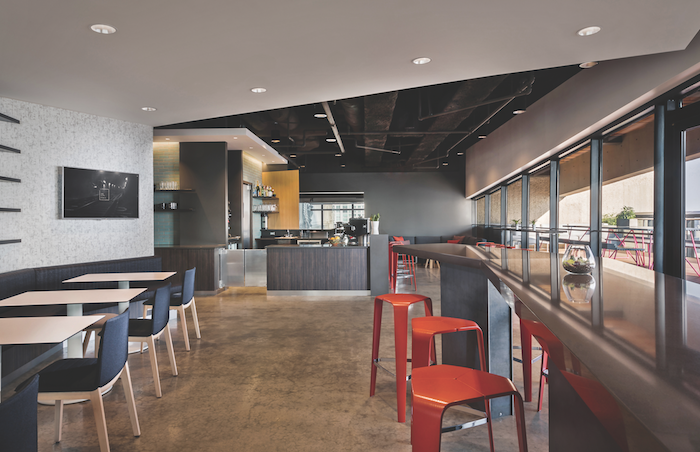
inside the offices at 160over90
design work by 160over90
“Philadelphia works as headquarters for us because of its livability and accessibility,” explains 160over90 executive creative director Stephen Penning. “It’s easy to get around and easy to get to, even for clients coming from thousands of miles away.” Penning’s 150-person shop serves an international client roster including Jaguar, Nike and the Philadelphia Eagles.
“Most of our clients are in New York and California, and we can work for them while enjoying the price break of living in Philadelphia,” says Paul Kepple, principal of Headcase Design. “Since we’re a small, two-man studio, that can be signifi cant.” Headcase has carved out a niche designing books with high production values—most recently Hamilton: The Revolution, a highly prased, behind-the-scenes volume about the hit Broadway musical.
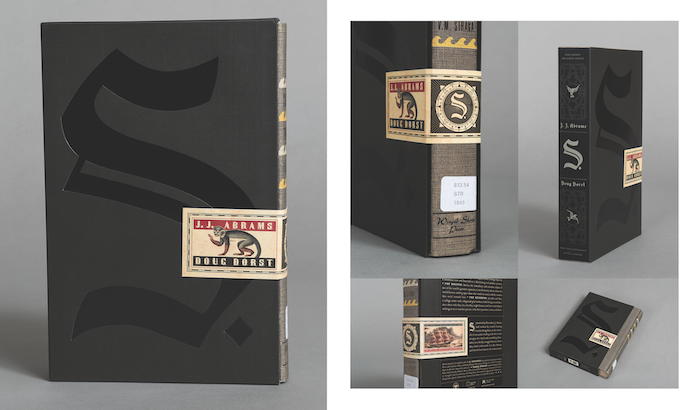
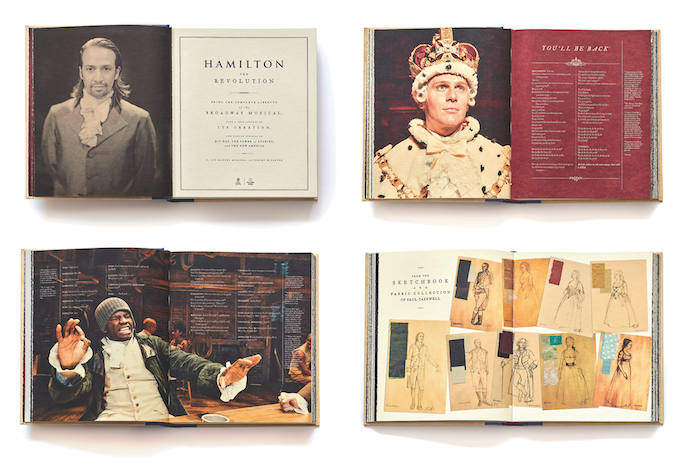
Work from Headcase Design
“You can get your arms around this city—it’s a lifestyle jewel nestled between NYC and DC,” says Alina Wheeler, who’s currently working on the fifth edition of Designing Brand Identity, the authoritative textbook on the subject. “The city is alive with cultural offerings and a highly creative foodie community. You have two world class museums: Philadelphia Museum of Art and the Barnes—and something happening all the time,” Wheeler says.
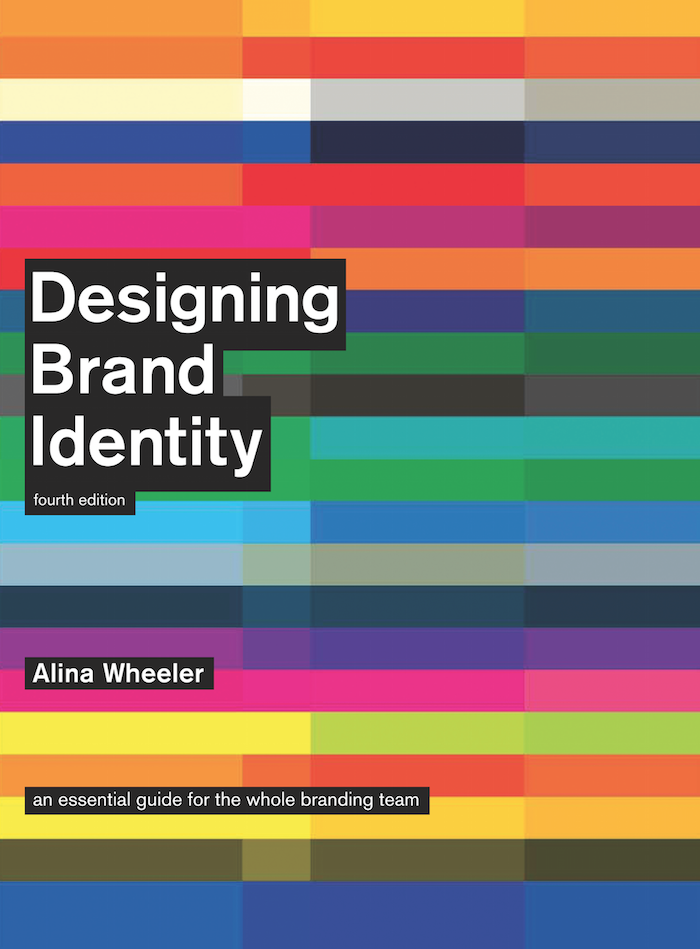
“Philly’s a major city with the heart of a small town,” adds Woody Harrington of design studio The Heads of State. “On any given coffee break, you might run into another designer, client or even a professor.”
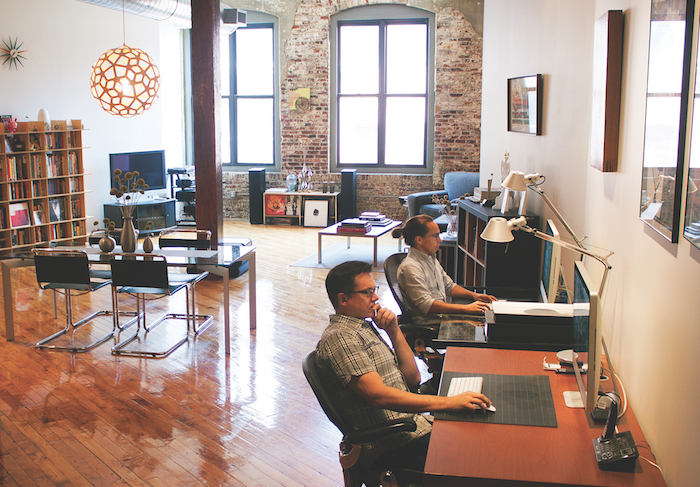
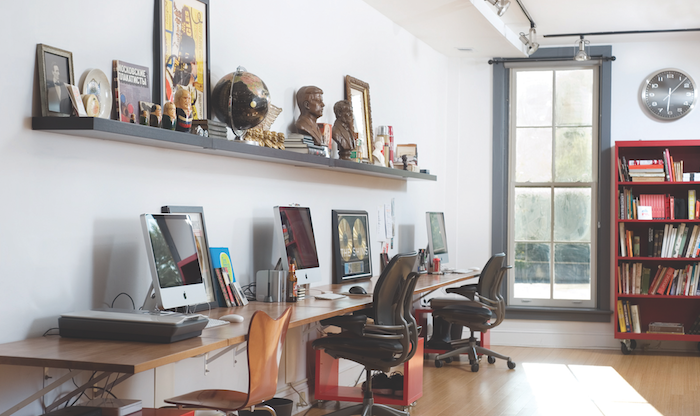
Inside the offices at Heads of State
AIGA Fellow Frank Baseman is one of those professors whom former students don’t mind running
into, perhaps at one of the eateries in Reading Terminal Market. “It’s my favorite place,” Baseman says, “a true melting pot of every walk of life from lawyers to students, from Main Line to grittier North Philly.”
Baseman is Philadelphia’s ultimate professor and role model. Besides being Graphic Design Communication program director at Philadelphia University (and winner of their Innovation in Teaching award), this former AIGA national board member has run Baseman Design Associates for two decades and was named one of 2013’s “Most Influential Graphic Designers Working Today” by Graphic Design USA.
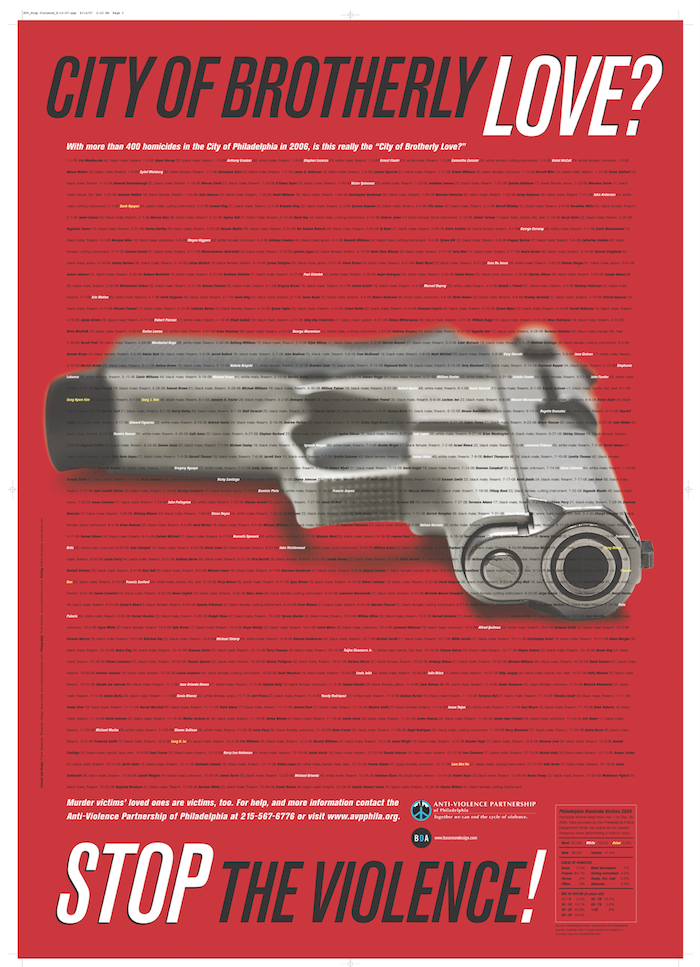
Poster by Baseman Design Associates
COLLEGES, UNIVERSITIES, ART SCHOOLS
Many Philadelphia designers grew up inside the city limits, in the suburbs, and in rural Pennsylvania
towns. Others hail from not-too-far-away places like Jersey City, NJ; the Hudson Valley region of New York; and Ocean City, MD. Most likely, they attended one of Philadelphia’s 21 four-year colleges and universities, with notable design departments at Penn State, Philadelphia University, University of Pennsylvania, Temple University’s Tyler School of Art, Drexel University, Moore College of Art and Design, University of the Arts and Rutgers (across the river in Camden, NJ). If they ventured farther afield to, say, Yale, many returned to found their own firms, work in the studios and agencies, and teach.
As just one example of the academic rigor here, design education at Philadelphia University begins freshman year with Integrative Design Process, a course required of all business, engineering and
design majors. Kradel-Weitzel describes it like this: “Using design-thinking techniques, students work in teams and use human-centered research to discover opportunities and propose solutions. This methodology of problem-solving extends through senior year when the level of complexity is intense.”
Graduates of these programs say they were inspired by Paul Rand, Tibor Kalman, Paula Scher and other design heroes, but there is a true scholarly bent here. Allan Espiritu, founder of GDLoft, talks about being drawn to text-based art, conceptual art movements and Situationist Theory.
Matt Bouloutian of Modern Good, a Tyler graduate, mentions “the muscular illustrative approach influenced by Push Pin Studios and the great Polish poster tradition.” This duality, he says, makes Philadelphia work so diverse and portfolios so interesting.
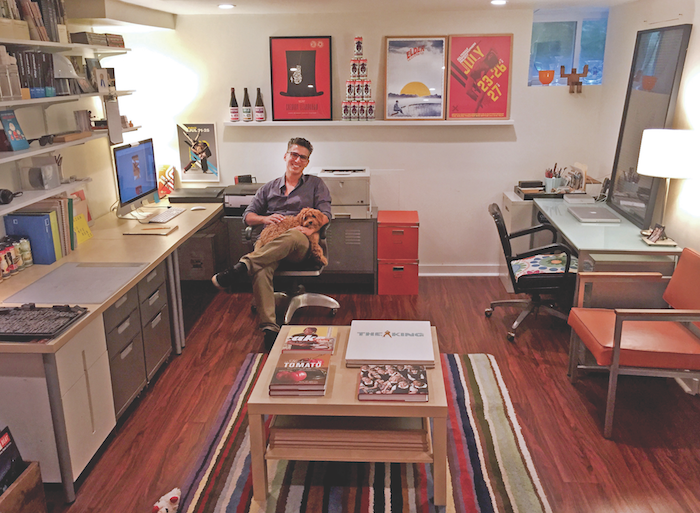
Inside Modern Good
WORK—AND CAMARADERIE
“A lot of designers here work in-house at corporations like Comcast and in the finance or pharmaceutical spheres,” says Kradel-Weitzel. “Then there is a sector doing boutique branding work or something entrepreneurial. These types of employment can lead to different lifestyles and perspectives, but we all go out for a beer at the end of the day.”
Brian Jacobson, founding partner of J2 Design and recipient of the 2010 AIGA Philadelphia Fresh Award for design excellence says there aren’t many organizations, civic leaders or CEOs you can’t get in front of. “All it takes is a bit of hustle.”
Events like the annual Design Philadelphia Festival held in October attract 400 professionals and students from every design sector.
And then there are the monthly Creative Mornings, a free breakfast lecture series hosted by Josh Goldblum. “It’s a global phenomenon like TED talks but integrated into the local creative fabric,” he says, “and it’s inspiring to see how the 1,600 folks in our community help out each other and make connections. People here are concerned with doing good work without the pomp and circumstance that exists in other big cities.”
Another way to share designerly love is through AIGA Philadelphia. Founded in 1981 as AIGA’s first local chapter, it has nearly 700 active members. “It’s our 35th anniversary this year, and we’re throwing a big party with a poster show and a silent auction honoring influential designers in our history,” says chapter president Lauren Dougherty. “Also on the slate is our biennial awards program, an in-house design conference, a women’s leadership workshop, design-thinking workshops with IBM, and a youth camp to introduce inner-city kids to design.”
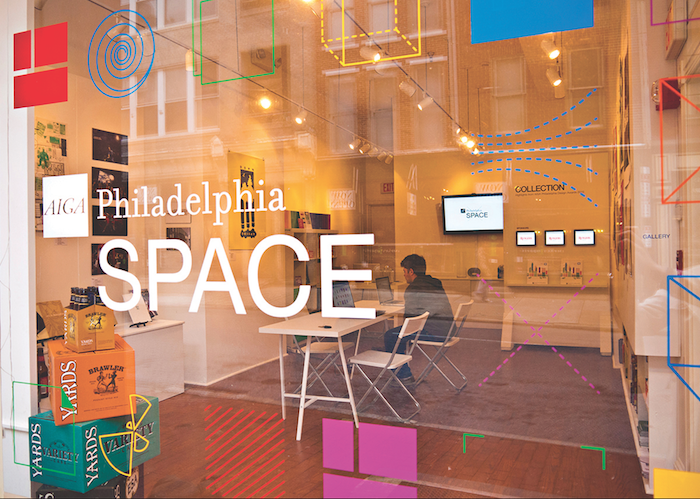
Design for AIGA Philadelphia by GDLoft
All the locals meet and connect at AIGA lectures, exhibitions and social events, where you’re likely to run into the folks from these stellar firms:
PHILADELPHIA DESIGN FIRMS
Bluecadet
“I grew up outside Philly but came into the city all the time,” recalls founder and CEO Josh Goldblum. “After focusing on studio art at the School of the Museum of Fine Arts in Boston and dabbling with political cartooning, I ended up becoming ‘new media specialist’ at the Smithsonian, where I met my business partner, creative director Troy Lachance. In 2007 we headed back to Philly to start Bluecadet because we realized how much potential there is here to help the museums, universities and nonprofits tell their stories with digital.”
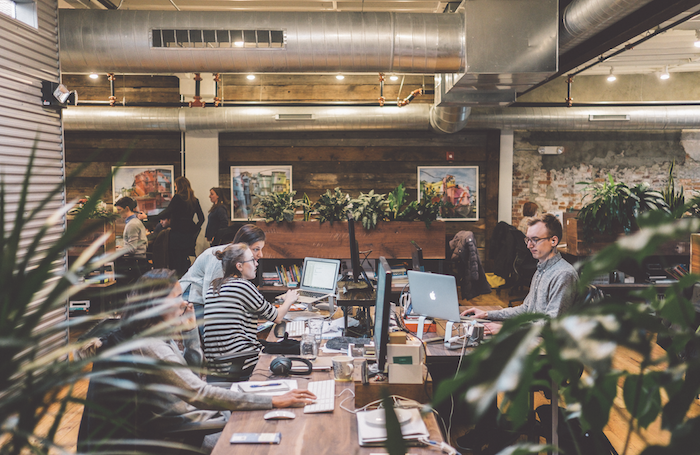
inside the offices at Bluecadet
With almost 40 designers, producers and developers at its office/production studio in the Fishtown neighborhood, Bluecadet bills itself as “an Emmy Award–winning digital agency that creates world-class websites, mobile apps and interactive installations and environments.” (The Emmy was for Live, Hope, Love, an interactive documentary about the AIDS crisis in Jamaica.)
Recent projects include the interactive media installation at the Baseball Hall of Fame in Cooperstown, NY, and one of the world’s largest touch walls at the Smithsonian National Air and Space Museum in Washington, DC.
interactive museum experiences by Bluecadet
GDLoft
Allan Espiritu founded GDLoft in 2002 “to provide a new design voice for Philadelphia nonprofi t organizations.” He explains: “At the time, much of the work in that sector felt conservative and traditional, and I wanted to provide an alternative process.”
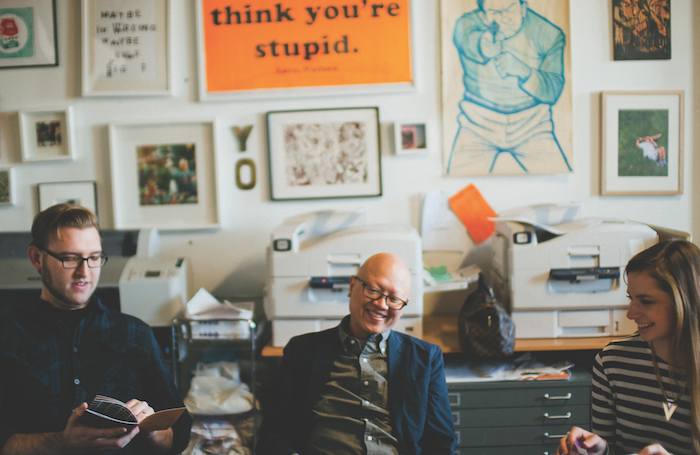
This small firm is responsible for some very big work—and it’s all print work, with nothing web- or screen-based. “We are interested in making things that take up physical space in the world,” Espiritu says. From a converted warehouse in the up-and-coming “Soko” area of South Kensington, GDLoft works with educational, social service and cultural nonprofits—including AIGA, the PEW Organization, University of the Arts, New York University, and Rutgers, where Espiritu teaches. One of his students, Kevin Kernan, went on to get a master’s in arts administration, became partner last year and now oversees GDLoft’s business aspects.
“Kevin and I aspire to create sustainable works that reside between fine art and graphic design, hoping to promote interaction between viewer and maker,” says Espiritu.
Work by GDLoft
Gold Collective
“As two women sharing a love of design and the desire to merge living and design practice, we’ve created a nontraditional studio model,” says founder Renée Walker, originally from upstate New York.
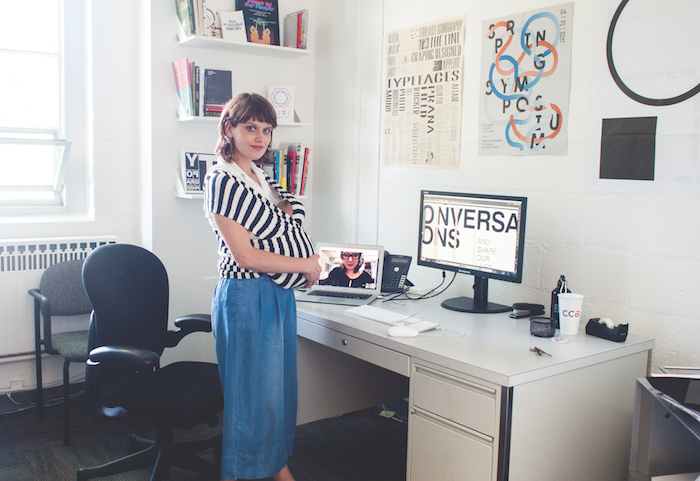
Renée Walker of Gold Collective, with baby Naomi
She and business partner Heidi Meredith met while working on their MFAs at California College of the Arts. “We both love typography, pattern, books, all things design,” says Walker. “Our skill set blends Heidi’s experience at the quirky publisher McSweeney’s with my classically trained Swiss-Modern background.”
After opening a San Francisco studio in 2011, the partners became bicoastal. Inspired by Google Hangouts, their studio is a virtual blend of two home offices. “It works because our process is collaborative, and we’re very creative in how we communicate,” Walker says.
Both women have small children and can be found working with babies strapped on. “Because of our many roles, from mothers to educators”—Walker teaches at Philadelphia University and Meredith at Academy of Art University in San Francisco—“we focus our work where our passions lie.”
Those passions result in pristine identity, print, exhibit and interactive work for clients ranging from educational institutions and publishers to startups like Flipboard. Yet the partners admit that “whenever possible we love to pull out scissors, colored tape, and even a splash of glitter.”
work by Gold Collective
Karnes Poster Company/Karnes Coffey
“I grew up drawing, copying whatever struck my fancy, from the cover of Rubber Soul to KITT, the car from ‘Knight Rider,’ which I could render from multiple angles,” says Eric Karnes, who has never stopped drawing and rendering.
In 2013, he and Christine Coffey founded Karnes Coffey, a multidisciplinary design partnership that specializes in identity design. But because he’s “a dreamer artist type” he has a second, side business, Karnes Poster Company. This labor of love began when he offered to waive the design fee in order to convince a client to commission a poster instead of a more mundane postcard. From that moment he was hooked on designing cerebral, intricate, layered posters, which he claims “will never make a profit,” but do make him happy.
Clients of Karnes Coffey include the Richmond Ballet, Virginia Commonwealth University, the Smithsonian and Wired magazine, but Karnes Poster clients allow him to “channel his nervous energy” and make something with real longevity. “When a poster arrives in the mail, the first impulse is to hang it on your office wall,” he says. “And if it’s nice enough, it may get promoted to your living room in a swanky modern frame. What more can a designer ask for?”
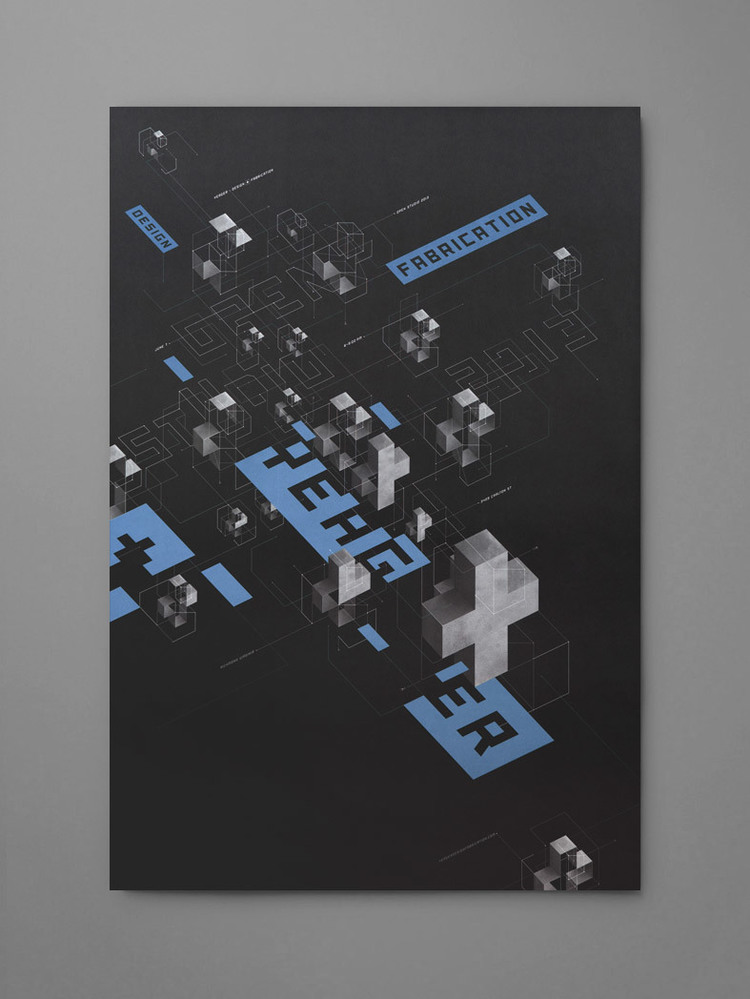
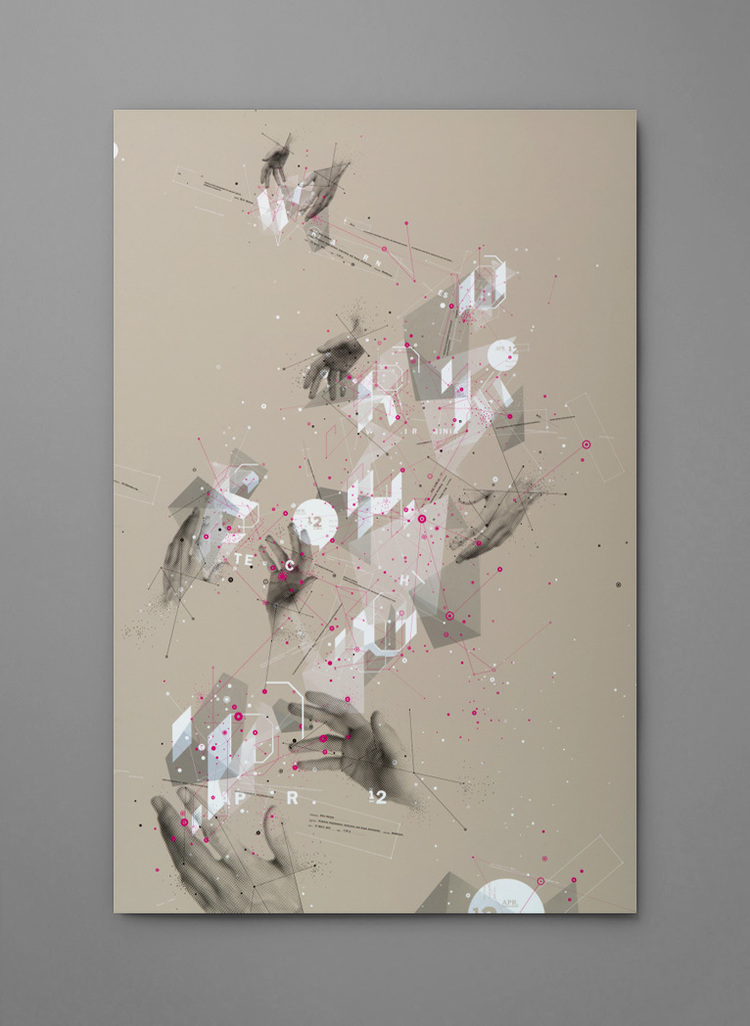
Work from Karnes Poster Company, both of which earned wins in last year’s Regional Design Annual
Kradel Design
Kradel’s studio mantra, “Use the power of design to inspire meaningful change,” can be summed up by its Posters Against Ebola project.
“Humans have known about Ebola since 1976,” says Maribeth Kradel-Weitzel. “In 2014, thousands of people died, but this horrific situation wasn’t a media focus in the U.S. So I invited designers, artists and activists to express ideas and solutions via posters, with sale proceeds going to Doctors Without Borders. The project is a lasting record of the reaction to the epidemic.”
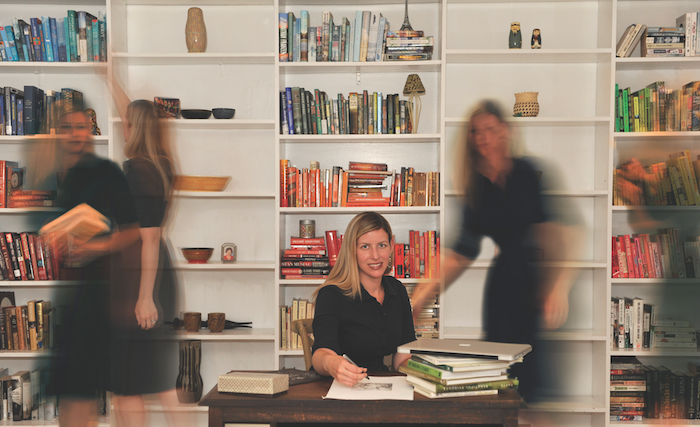
Kradel-Weitzel never fears taking a stance. “At Penn State, our tyrannical but wise instructor Lanny Sommese said: ‘When everyone is going left, go to the right.’ Everyone you meet and every experience you have teaches you something. Design should be driven by the world around us in all its messy, confusing glory.” When Kradel-Weitzel was AIGA Philadelphia president, the board established the Paid Internship Pledge, which has more than 100 signatures of support.
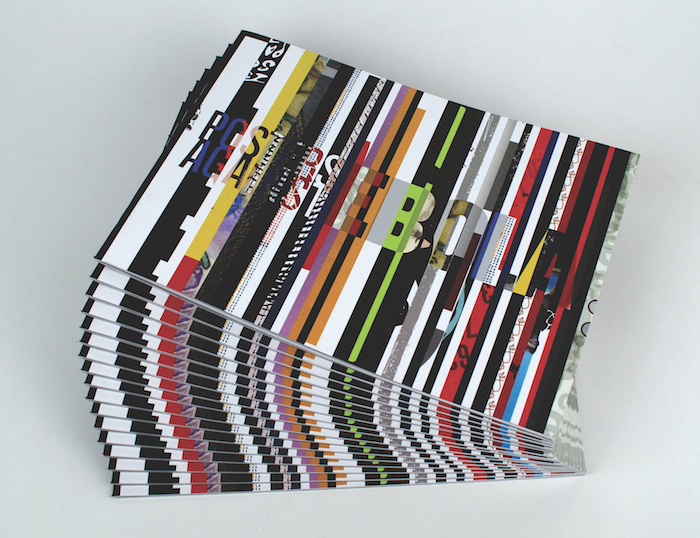
work by Kradel Design
The Heads of State
For more than 10 years, Tyler graduates Jason Kernevich and Dustin Summers have created memorable posters, book covers, branding and illustration. Their firm is known as “a force” in the Philadelphia area. “We’re a small, principle-driven team,” says Woody Harrington, who joined in 2012. “That means clients work directly with us. We’ve been around long enough to know that this business is about people and relationships as much as it is about color and type.”
These guys do it all: branding, advertising, illustration, packaging and books for clients including New Balance, The New York Times and the U.S. Postal Service. And they’re design entrepreneurs, too; in 2012 they launched Pilot and Captain, an online shop that offers cool travel-themed T-shirts, posters and products.
work by The Head of State
Machinery
Copywriter Ken Cills and art director Kristian Summerer are founders and co-creative directors of this agency located in Chinatown. “We’re only a six-person shop but we’ve been delivering ‘big agency’ work for nearly 10 years,” says Summerer.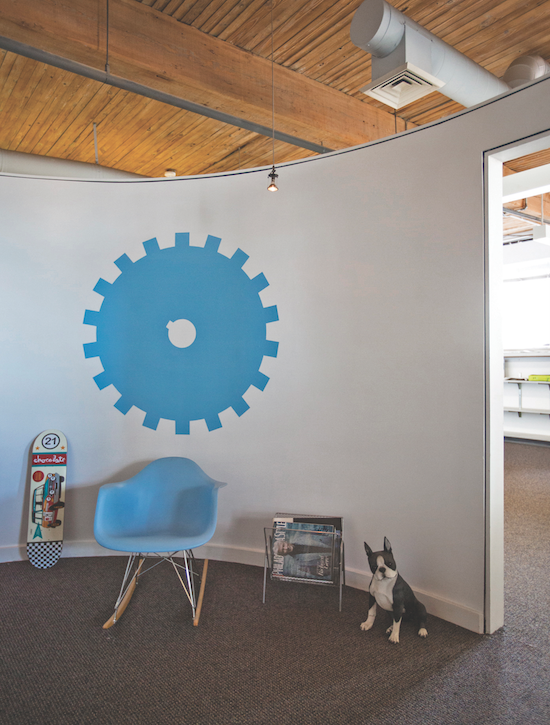
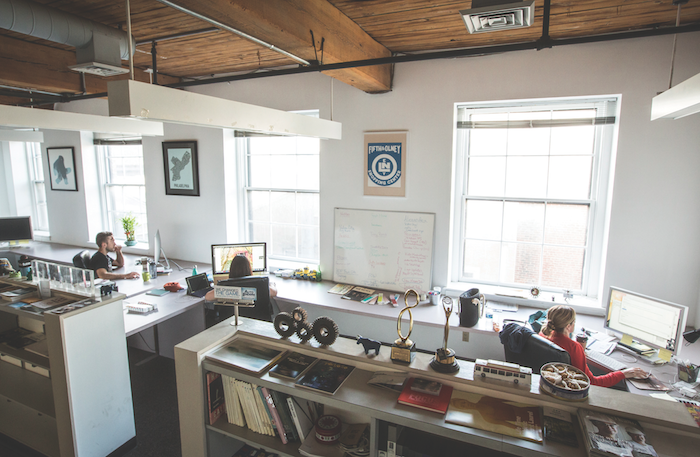
Inside the offices at Machinery
Clients range from local restaurants and GoldenNuggetCasino.com to Princeton HealthCare System and Americans for the Arts.
“Whether we’re selling pizzas in Philly or raising awareness for a national nonprofit, our job is to foster an emotional connection between a person and a brand. Photographers, programmers, musicians, directors, editors, writers, illustrators and printers all call Philly home,” he says. “It’s awesome when multiple disciplines are needed to produce a job. You need a 3D animator, a letterpress printer? They’re probably a couple of blocks away and ready to get to work and make something great.”
work by Machinery
It’s awesome to see how at home Philadelphia designers feel, both in business and in life. So when you’re in town, be sure to visit the institutions mentioned here—and the people too. They’re a friendly bunch, so you might even get invited to stop by the studio to say hello or go out for a beer. At the very least, you’re likely to get a list of all the great eating and drinking spots that didn’t fit in this article.








